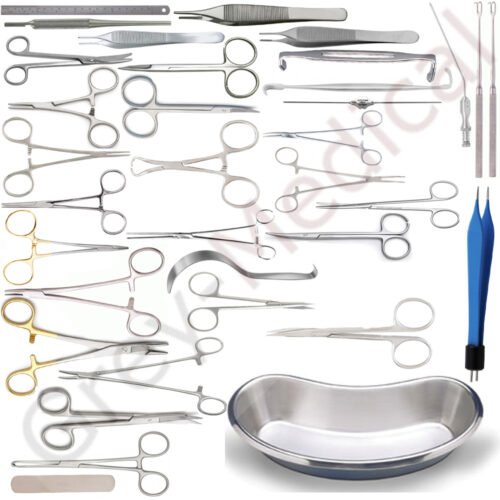Breast reconstruction surgery, often performed after a mastectomy, is a complex procedure that requires both technical skill and artistic precision. While the main surgical instruments are essential for performing the bulk of the procedure, side sets breast surgery provide the supplementary tools that enable surgeons to address the finer details of the surgery. In this blog, we’ll explore how side sets enhance breast reconstruction procedures, their importance in achieving optimal outcomes, and the key instruments involved.
Why Breast Reconstruction Requires Specialized Tools?
Breast reconstruction is a unique surgical challenge because it involves restoring the natural shape and appearance of the breast, often using tissue from other parts of the body or implants. The goal is to create a breast that looks and feels natural while minimizing scarring and ensuring proper healing. This requires precision at every step, from tissue dissection and implant placement to suturing and wound closure. Side sets provide the specialized tools needed to handle these challenges effectively.
Instruments Included in Side Sets for Breast Reconstruction
- Tissue Expanders and Fillers One of the key components of breast reconstruction surgery is the use of tissue expanders. These devices are used to gradually stretch the skin and tissue to create enough space for a breast implant. Side sets often include expanders and fillers that allow surgeons to carefully control the expansion process, ensuring that the breast can be reconstructed to the desired size and shape.
- Microvascular Instruments In cases where autologous tissue is used for reconstruction, such as in a DIEP flap procedure, side sets include microvascular instruments that allow surgeons to carefully connect blood vessels to the transplanted tissue. These delicate tools, including micro forceps and vascular clamps, are essential for ensuring that the new tissue has a sufficient blood supply, which is critical for successful healing.
- Specialized Retractors Breast reconstruction often requires deep tissue manipulation, and specialized retractors in the side set provide optimal exposure of the surgical site. These retractors are designed to hold back tissue while minimizing damage, allowing surgeons to work in confined spaces with precision. Retractors such as the Deaver retractor or Malleable retractor are commonly found in breast reconstruction side sets.
- Suturing Instruments Proper wound closure is crucial in breast reconstruction, as it not only affects the final appearance of the breast but also plays a role in the healing process. Needle holders, suture scissors, and skin staplers are part of the side set and provide the necessary tools for creating secure, aesthetically pleasing closures. These instruments help reduce scarring and promote faster recovery.
- Fat Grafting Instruments Fat grafting, or lipofilling, is often used in breast reconstruction to add volume and improve the contour of the breast. Side sets include liposuction cannulas and fat injectors, which allow surgeons to harvest fat from other parts of the body and inject it into the breast. This technique helps create a more natural look and feel, particularly in patients who have undergone mastectomy.
The Importance of Side Sets in Post-Mastectomy Reconstruction
For women who have undergone a mastectomy, breast reconstruction offers a way to regain their confidence and restore their sense of femininity. The success of the procedure depends on the surgeon’s ability to carefully manipulate tissue, place implants or grafts, and ensure proper healing. Side sets provide the tools needed to achieve these goals by offering specialized instruments that address the unique challenges of breast reconstruction.
- Precision: Microvascular instruments and tissue expanders allow for precise manipulation of tissues and blood vessels, ensuring successful outcomes.
- Customization: Side sets can be tailored to the specific needs of each patient, whether they are undergoing implant-based reconstruction or flap surgery.
- Minimizing Complications: Tools for controlling bleeding, maintaining tissue integrity, and ensuring proper wound closure reduce the risk of complications such as infection or implant displacement.
Conclusion
Breast reconstruction surgery is a complex procedure that requires a combination of technical skill and specialized instruments. Side sets play a crucial role in ensuring that the surgery is performed with precision, care, and attention to detail. By providing tools for tissue expansion, microvascular work, and fat grafting, side sets enable surgeons to achieve optimal results for their patients. Investing in high-quality side sets tailored to breast reconstruction procedures can significantly enhance patient satisfaction and surgical success.
Each of these blogs highlights the significance of side sets in breast surgery procedures, showcasing the different tools involved and how they contribute to better surgical outcomes.





Comments